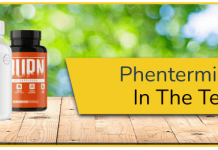Introduction: Nanotechnology is a developing technology whose use is increasing in different aspects. Among various nanostructures that are widely used, we can refer to titanium dioxide nanoparticles (Tio2-np), which are applied in water and wastewater treatment, antibacterial and antifungal substances, and self-cleaning surfaces; however, due to passing of the particles through placenta and blood–brain barrier, it may cause pathological damages in infants and affect the future generations’ health. Objective: The aim of this study is to investigate the impact of administration of titanium dioxide nanoparticles during pregnancy on hematological parameters and lipid profile in the mice offspring. Materials and Methods: In this experiment, 30 female mice were divided into three groups, including the control group who received no substance, the solvent group who received drug carrier on the 3rd, 7th, 10th, and 14th days of pregnancy, and the treatment group who received subcutaneously 10 μL of titanium dioxide nanoparticles of 1 mg/mL concentration in the 3rd, 7th, 10th, and 14th days after mating. Afterwards, among the offspring of each group, 10 male and 10 female offspring were chosen to evaluate hematological parameters and lipid profile on the 42nd day. Results: The results demonstrated that offspring exposure to prenatal titanium dioxide particles (Tio2-NP) in the treatment group causes changes in hematological parameters and lipid profile levels in male and female offspring; however, changes were greater in female offspring. Conclusion: Since previous studies have shown that titanium dioxide nanoparticles have the ability to cross the placenta and blood–brain barrier. After passing the barriers, they cause damages to various organs including liver and kidney and also changes in gene expression levels in different parts of the body including brain and bones. In addition, they result in producing free radical in the body and developing disorders in globules production and lipid metabolism.
Copyright © 2023 by atmph.org
Please also visit our other online offers as well as partners: Arlington Cemetery



